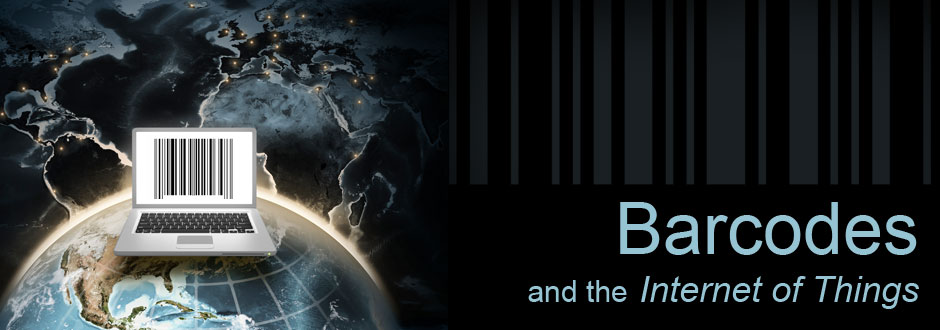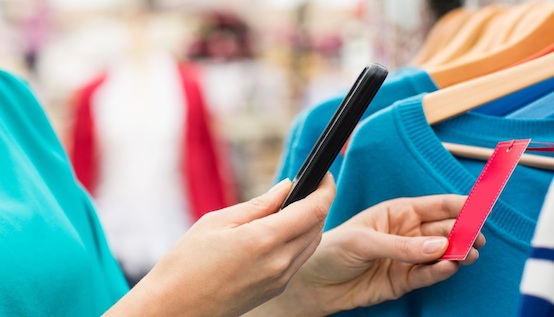Wasp Barcode Technologies: The Barcode Solution People
Barcodes and the Internet of Things

The latest technology trend is no longer knowing about or having the latest phone or tablet. Nowadays though, if you are in technology-focused industry, you may have heard buzz around the term
Internet of Things (IoT). Do you actually know what it means? We explain what the term means, how it can benefit organizations, and how barcodes play a significant role in this technological concept.
The
Internet of Things concept has been around since 1991. However, it was
Kevin Ashton’s use of the term in 1999 that really sparked the discussion of how information is gathered and disseminated via the Internet. As a simple explanation, the
Internet of Things refers to the idea that our physical environment – the things – would communicate information to the Internet without any help from people. The physical world would become an information system where just about everything is connected and communicates in an intelligent fashion.
Cisco refers to this concept as the
Internet of Everything and has dedicated a website to explaining the value and potential of a networked connection of “people, process, data, and things” for both the public and private sectors. According to their research, the
Internet of Everything is a $19 trillion global opportunity to be tapped over the next decade. It’s no surprise companies are moving to take advantage of an idea intended to “save money, improve effectiveness & productivity, and generate new revenue.”
 Business:
Business: The IoT is becoming reality for the business industry through Internet-managed assembly lines and connected factories and warehouses. For example, with the Internet of Things, service vehicles would have the ability to intelligently adjust driving speeds, improve fuel efficiency, and optimize delivery routes. Many business owners are also using temperature and lighting controls in their organizations in order to save on operating costs.
Home: In January 2014,
Google acquired Nest, a manufacturer of smart thermostats and other connected products. Nest’s thermostat learns and anticipates the needs of the homeowner and automatically makes smart decisions based on that information. In addition, homeowners can use their mobile device to check their thermostat’s settings and adjust them from anywhere. Google’s acquisition of Nest shows their intention to join the IoT race early – with hopes that their operating system becomes the foundation of connected “things” within the home.
Retail: According to an infographic by Cisco Consulting Services, 80% of all shoppers—the Digital Mass—use
the Internet to purchase and research products and services. Retailers are also including
QR codes and barcodes on items consumers can scan using an app on their phone to obtain more information about the product. Having these items connected via a network would allow the consumer to check that store’s (or any location’s) current inventory for different sizes or colors. These indicators of increased connectivity show the IoT is transforming the consumer’s shopping trips – especially since consumers are expecting more digital in-store experiences.

In the early days of the IoT, radio-frequency identification (RFID) was believed to be the primary method of labeling items. However, combining the use of RFID tags with both barcodes and QR codes allows the consumer to connect to the IoT with the simple scan of a smartphone or tablet. Having all objects marked with a QR code or barcode means improving the retail environment for consumers because they will be more educated about the item before purchasing and they will be able to check for an item’s availability. If all inventory is tagged with barcodes, not only will managers have a better idea of their inventory status but so will the
consumers of those products.

With tech developments such as “
Tile,” which allows you to connect anything to GPS and track with the appropriate smartphone or tablet, the IoT is only going to continue on its path of expansion. These and other technological advancements will ensure that everything becomes connected and able to communicate in an intelligent fashion.
Don’t be left behind connecting to the Internet of Things. Get ahead of the game by investing in an
asset or inventory management solution that generates barcodes for all of your valuable business items and helps you keep track of what you have and how much is available for your customers.
Ready to get started? Visit the
Wasp website today for more information about finding the right solutions for your business.
 The latest technology trend is no longer knowing about or having the latest phone or tablet. Nowadays though, if you are in technology-focused industry, you may have heard buzz around the term Internet of Things (IoT). Do you actually know what it means? We explain what the term means, how it can benefit organizations, and how barcodes play a significant role in this technological concept.
The latest technology trend is no longer knowing about or having the latest phone or tablet. Nowadays though, if you are in technology-focused industry, you may have heard buzz around the term Internet of Things (IoT). Do you actually know what it means? We explain what the term means, how it can benefit organizations, and how barcodes play a significant role in this technological concept.

 With tech developments such as “
With tech developments such as “

